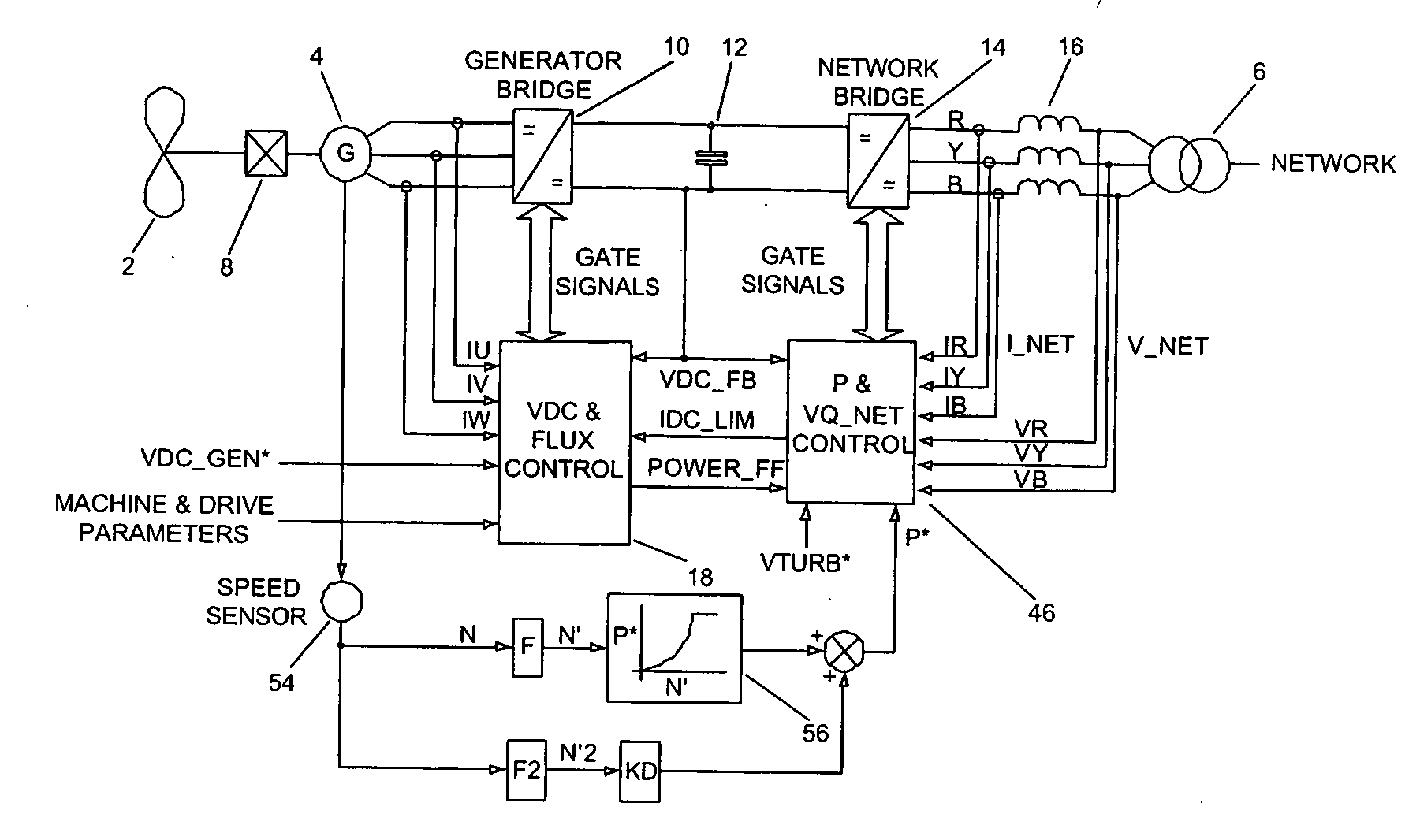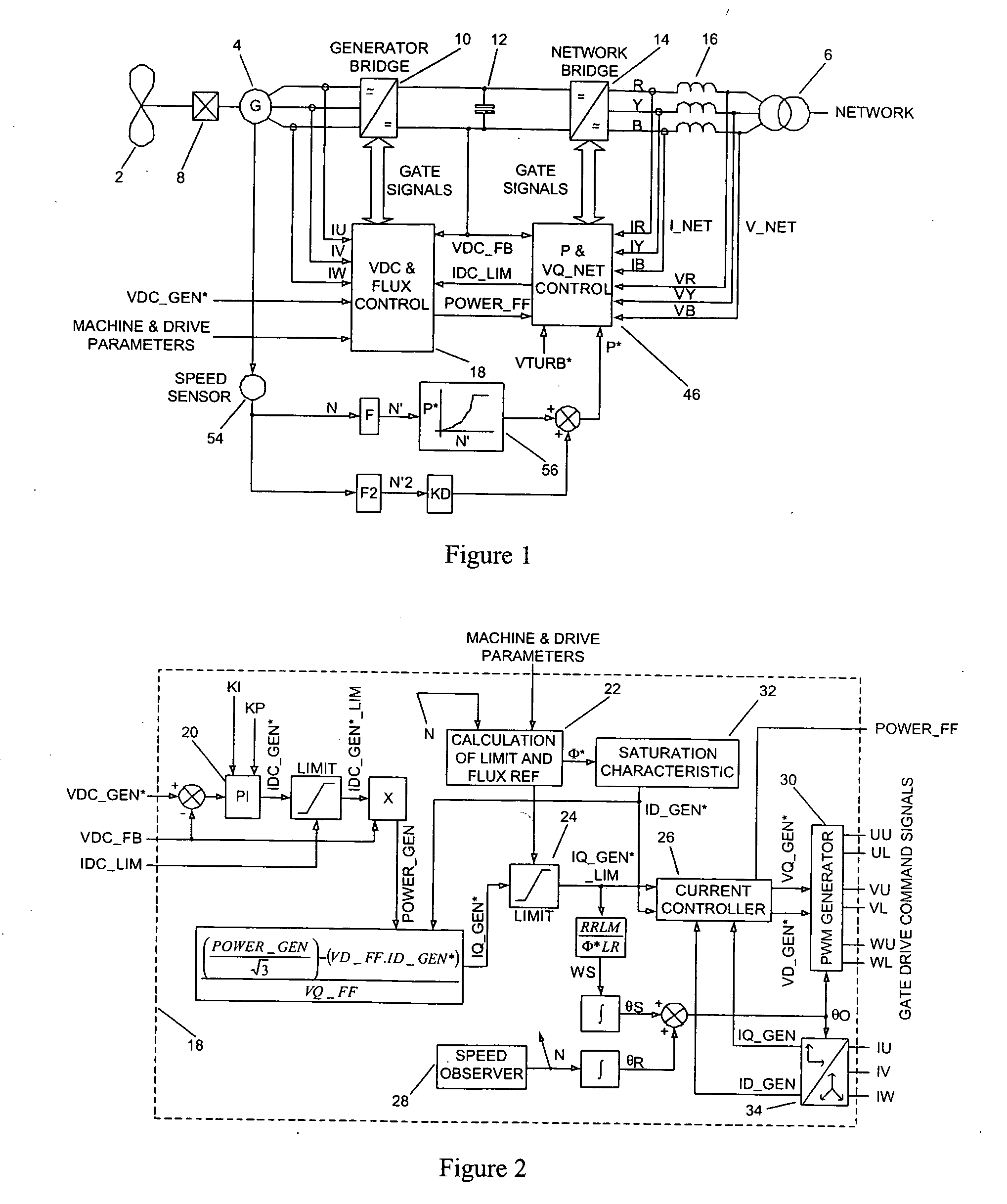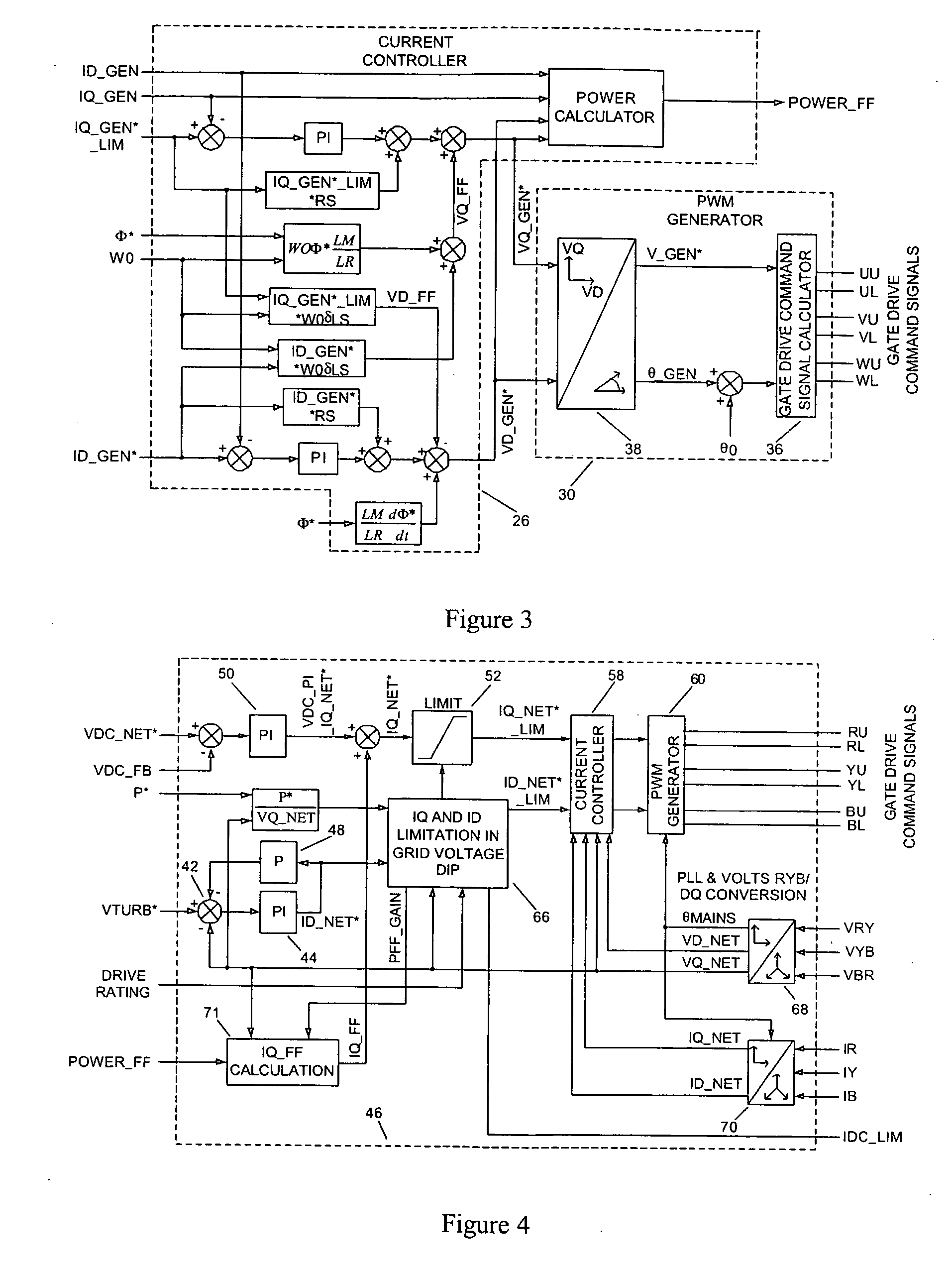Power converters
- Summary
- Abstract
- Description
- Claims
- Application Information
AI Technical Summary
Benefits of technology
Problems solved by technology
Method used
Image
Examples
Embodiment Construction
Power Converter Topology
[0071] The basic topology of the power converter will be outlined with reference to FIG. 1.
[0072] The power converter is used to interface between a wind turbine 2 driving a variable speed ac induction generator 4 and a nominally fixed frequency power network (labelled NETWORK). The wind turbine typically includes three turbine blades (one turbine blade or two turbine blades or more than three turbine blades are also possible) mounted on a rotating shaft and whose pitch can be controlled by means of a pitch actuator in order to optimize and / or limit the capture of wind energy into the generator 4. A gearbox 8 is used to connect the rotating shaft to the rotor of the variable speed generator 4. In some cases, the rotating shaft can be connected directly to the rotor of the variable speed generator. This means that the speed of rotation of the rotor varies as a function of the wind speed and that the frequency of the voltage developed at the stator of the ge...
PUM
 Login to View More
Login to View More Abstract
Description
Claims
Application Information
 Login to View More
Login to View More - R&D
- Intellectual Property
- Life Sciences
- Materials
- Tech Scout
- Unparalleled Data Quality
- Higher Quality Content
- 60% Fewer Hallucinations
Browse by: Latest US Patents, China's latest patents, Technical Efficacy Thesaurus, Application Domain, Technology Topic, Popular Technical Reports.
© 2025 PatSnap. All rights reserved.Legal|Privacy policy|Modern Slavery Act Transparency Statement|Sitemap|About US| Contact US: help@patsnap.com



